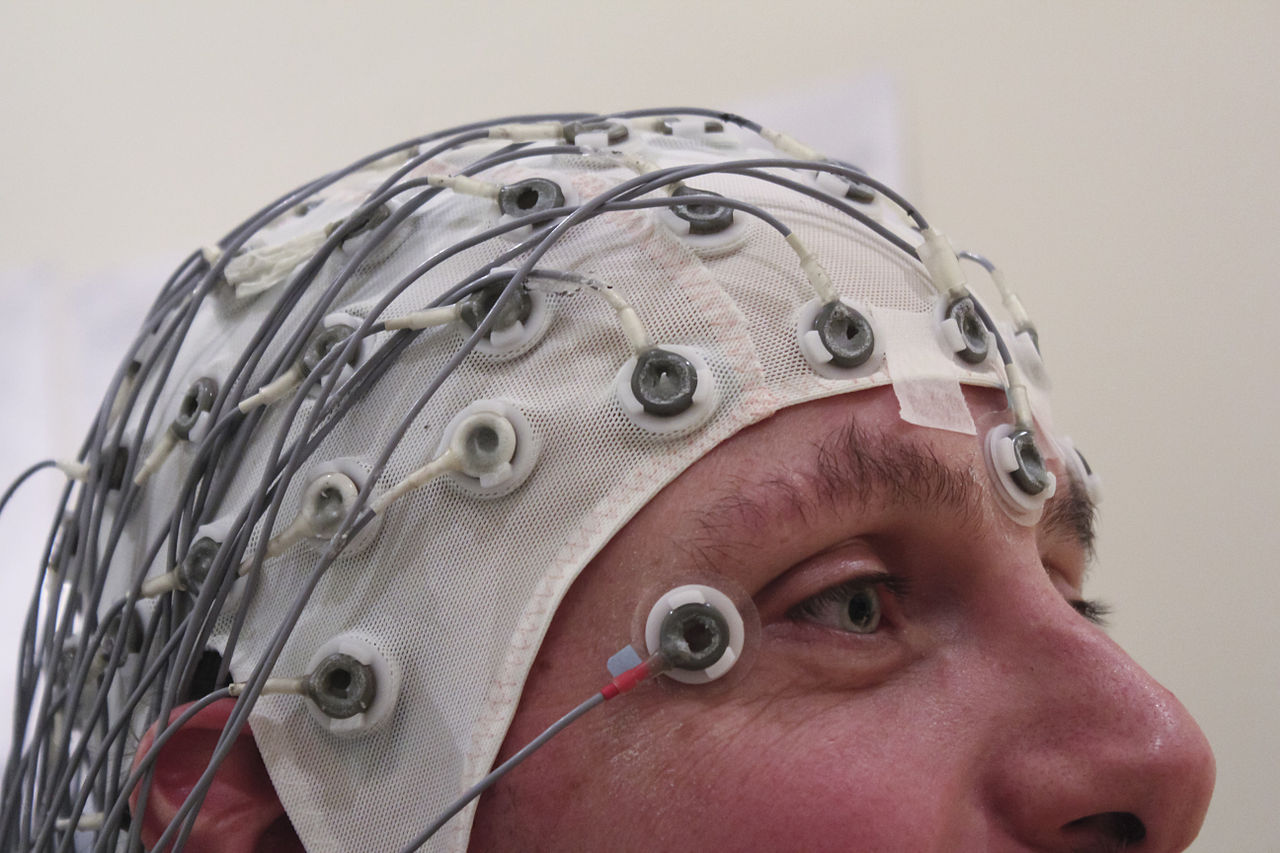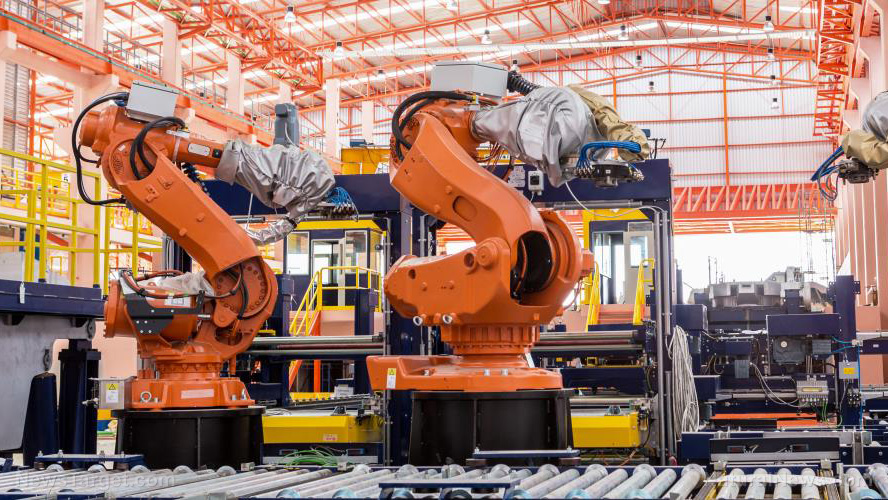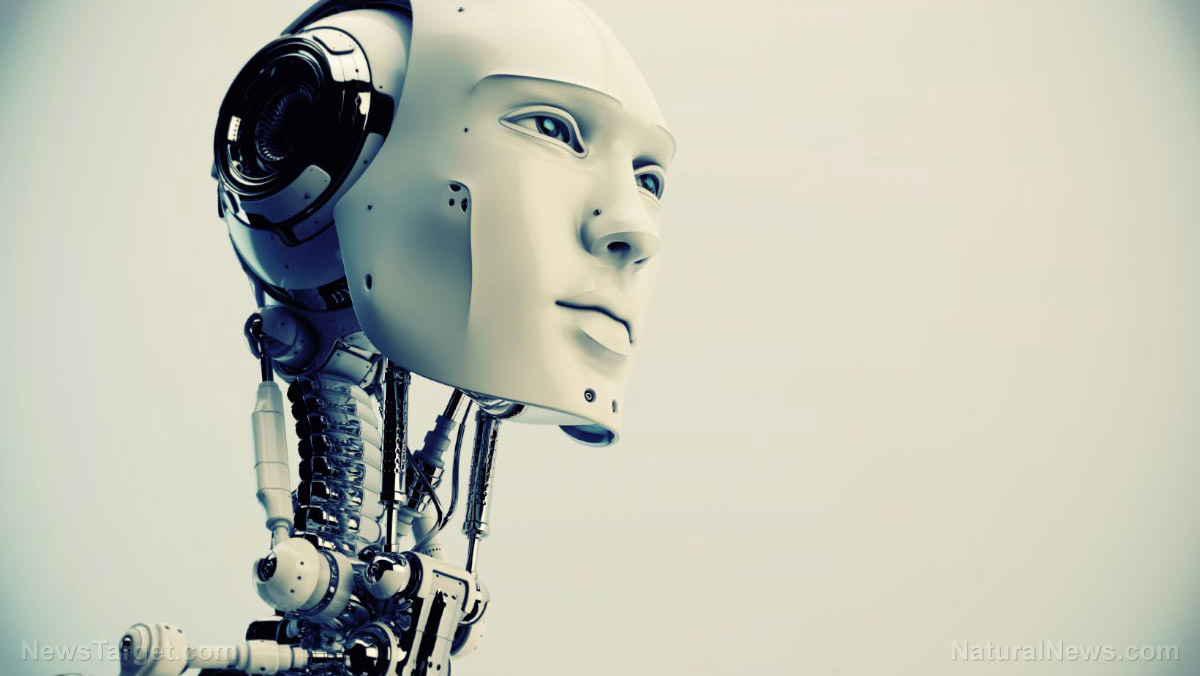Tough new high-tech fiber developed by engineers could be used as skin for robots
11/27/2019 / By Melissa Smith

It’s not just jobs that robots are taking over from humans; they could soon look like one, too. Researchers from North Carolina State University have developed a tough high-tech fiber with the toughness and elasticity of human skin. It can be incorporated into soft robotics, packaging materials or next-generation textiles.
The researchers made fibers using a gallium metal core surrounded by an elastic polymer sheath. The gallium core is conductive but loses its conductivity when the internal core breaks. Additionally, the fibers can be reused by melting the cores back together.
Although they used gallium for their proof of concept work, the researchers explained that the fibers could be tuned to change their mechanical properties or to retain functionality at higher temperatures by using different materials in the core and shell.
“Our fibers have the best of both worlds,” said Michael Dickey, professor and corresponding author of a paper on the work.
The fibers have the elasticity of rubber and the strength of metal. A rubber band can be easily stretched without using too much force, while a metal wire needs a strong force to stretch it, but it will break even before you can stretch it very far as it can’t take much strain. However, when the metal breaks, the fiber doesn’t fail because the polymer sheath absorbs the strain between the breaks in the metal and returns the stress to the metal core. This response is similar to how human tissue holds together broken bones. (Related: Engineers create a type of e-skin that restores the sense of touch for amputees using prosthetics.)
“Every time the metal core breaks it dissipates energy, allowing the fiber to continue to absorb energy as it elongates,” explained Dickey.
The fiber will release energy repeatedly through internal breaks, dropping the weight slowly and steadily instead of snapping and dropping a heavy weight. The fiber is tougher than either the metal wire or the polymer sheath on its own. So instead of snapping in two when stretched, the material can stretch seven times more than its original length. At the same time, it causes many additional breaks in the wire along the way.
“There’s a lot of interest in engineering materials to mimic the toughness of skin — and we have developed a fiber that has surpassed the toughness of skin yet is still elastic like skin,” said Dickey.
Robots could have the same tactile ability as humans with this electronic skin
Researchers from Korea Advanced Institute of Science and Technology (KAIST) in South Korea have also developed a material similar to human skin. They made an artificial skin that can be sprayed onto the surface of a robot. The material can be easily applied and is equipped with sensors that will give robots the same sense of touch as humans.
The KAIST researchers used an all solution-based method to develop a strain sensor that is as flexible as human skin and is much less sensitive to pressure. The electronic skin can be uniformly coated as a thin film on 3D irregularly shaped objects, which is highly suitable for robotic electronic skin or wearable electronic applications.
In addition, the electronic skin can distinguish mechanical stimuli analogous to human skin. It was designed to respond differently under applied pressure and strain.
If it experiences applied pressure, the conducting pathways that run through the material will barely change and the sensors will ignore the pressure. However, if it is under applied strain, the conducting pathways will change their shapes to conform with the strain on the skin, changing the resistance encountered by the skin.
“It is a key technology that can bring us closer to the commercialization of electronic skin for various applications in the near future,” said Steve Park, professor and lead researcher of the study.
Sources include:
Tagged Under: artificial skin, breakthrough, electronics, future tech, goodtech, innovation, inventions, robotics, robots, synthetic skin, technology, wearable electronics
RECENT NEWS & ARTICLES
COPYRIGHT © 2017 ROBOTICS.NEWS
All content posted on this site is protected under Free Speech. Robotics.News is not responsible for content written by contributing authors. The information on this site is provided for educational and entertainment purposes only. It is not intended as a substitute for professional advice of any kind. Robotics.News assumes no responsibility for the use or misuse of this material. All trademarks, registered trademarks and service marks mentioned on this site are the property of their respective owners.


















